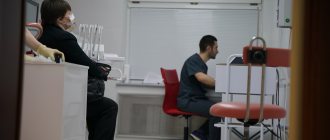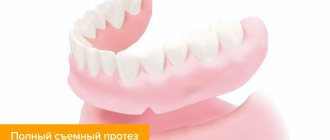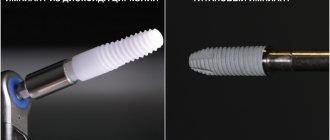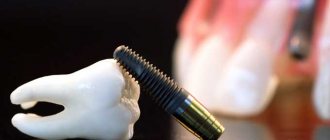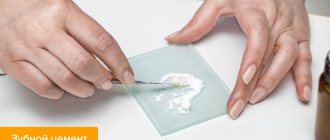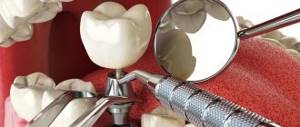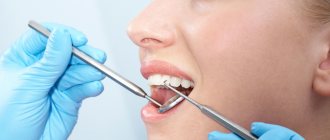Implantation is the most modern, reliable and complete way to restore beauty and functionality to your dentition. The success of this procedure largely depends on the doctor, but the quality of the implant itself plays an equally important role in the operation. Therefore, scientists around the world are constantly improving the shape, thread, surface and other properties of implants in order to get closer to the ideal - an artificial tooth root that completely replicates the real one. A serious step towards this ideal was the appearance of South Korean implants from Snucone.
Background
Initially, the South Korean company had the name “Jin-Heung ACE corp.” It was founded in 1997.
Since 2005, the company has been collaborating with German colleagues in the field of implantology. After that, by 2008 it changed its name to Snucone, under which it gained popularity among European countries.
Licensing in Russia took place only in 2015, but thanks to reliability and reasonable prices, the Snucone product line quickly spread and became popular among practitioners and the public.
Design features
To ensure good survival of the screw rod, the manufacturer uses the latest technologies, which are the result of 20 years of experience.
At the same time, she herself develops technologies for the production of titanium alloys, controlling the concentration of carbon, nitrogen and oxygen.
Features when installing Snucone dental structures.
| Serial number | Technological parameters | Short description |
| 1 | SLA surface | To ensure a porous surface, the Grade 4 titanium rod is coarsely sandblasted and then acid etched. This technology increases biocompatibility, which significantly speeds up the implant healing process. |
| 2 | Microdesign | The use of double self-tapping threads reliably fixes the implant, minimizing traumatic bone damage. At the same time, the implantation procedure is halved. The square profile of the screw rod prevents increased pressure on the bone tissue. |
| 3 | Morse cone | Any Snucone model has an elongated cone, which prevents infections from penetrating deep into the bone tissue. This is an important point in preventing the development of unpleasant odor from the oral cavity. |
| 4 | Possibility of subcrystal installation | This technology involves the implantation of an artificial rod with complete insertion into the bone. This technique prevents the possibility of resorption (the process of degradation and destruction) of bone tissue. |
| 5 | Application of Lindemann cutter | It ensures rapid drilling of the jaw bone without causing overheating, which avoids necrosis of the bone tissue. The use of a cutter does not cause much discomfort in the form of pain. |
| 6 | Torque wrench | Torque force prevents traumatic damage to the jaw row. This will help avoid situations where the rod is screwed in weakly, or, on the contrary, causes excessive pressure on the jaw bone. |
It should be borne in mind that a combination of innovative technological solutions increases the speed of engraftment of dental structures. Snukon implants provide a survival rate of 98% of cases, while some brands have a rate not exceeding 93%.
Main characteristics
In the production of Snucone implants, advanced technologies are used to facilitate the process of implanting an artificial root and make it as reliable and safe as possible.
This is facilitated by the unique design characteristics of the dental system:
- SLA surface. The titanium rod is blasted with an abrasive blast and then etched with acid. This promotes the formation of pores on the surface of the product, which increases the degree of biocompatibility with bone tissue and accelerates the healing process.
- Morse taper is a conical connection between an implant and abutment. Thanks to the hermetically sealed connection of the elements of the dental system, there is no risk of pathogenic microorganisms entering the implant body.
This minimizes the risk of developing tissue inflammation and rejection of the structure. - Double self-tapping thread with square profile. This design feature ensures minimal trauma to bone tissue and reliable fixation of the titanium rod.
- Switchable platform. By increasing the distance from the bone to the connection between the implant and the abutment, the risk of hard tissue loss is reduced.
- High-quality titanium alloy produced by implant manufacturer Snucone.
- The kit includes a Lindemann cutter and a torque wrench. Special tools that come with implants allow you to speed up and secure the process of drilling a hole in the bone and inserting a rod into it.
The combination of these design characteristics ensures maximum reliability of fixation of the titanium rod in the bone tissue of the patient’s oral cavity and minimizes the risk of its rejection.
Models of the TBR implant catalog and their purpose.
Come here if you are interested in the characteristics of Dentack implants.
At this address https://zubovv.ru/implantatsiya/proizvoditeli/znakomstvo-s-denti-system.html we will consider the design of Denti System implants.
Positive and negative points
The main advantages of this model range are the following qualities:
- Slight risk of possible rejection. According to statistics, designs take root in 98% of all cases.
- Long service life. Proper care and periodic dental examinations ensure comfortable wearing for more than 10 years.
- Minimal chance of developing inflammatory processes due to the complete covering of the implant insertion site by the abutment.
- Complete implantation into the jaw prevents destruction of bone tissue , and evenly distributes the load during the act of chewing.
- The products can be used in completely edentulous teeth.
- Low cost compared to similar designs from other brands.
The negative aspects include the limited information on statistical data. This is due to the fact that these products have been used in Russia only for the last 10 years.
Also, for a certain category of the population, the price of the Snukon orthopedic product can cause financial difficulties.
The best models of Denti System implants and their purpose.
Come here if you are interested in the features of Green implants.
At this address https://www.vash-dentist.ru/implantatsiya/proizvoditeli/assortiment-radix-belorussii.html you will find objective reviews about Radix implants.
The main advantages and disadvantages of Snukon implants
The above technologies implemented in Snukon implants can be attributed to their advantages - the very fact of their presence is a big plus, bringing the products closer to the level of leading brands. This is also of great importance for an implantologist - an implantation system thought out to the smallest detail makes it possible to install implants faster, safer and more reliably than if some of the technologies had not been implemented.
On a note
Dental implantation is a full-fledged surgical operation, and it is difficult to say that any nuance of the implantation system is a trifle. For example, color coding of ampoules with Snukon implants reduces the likelihood of errors when choosing a product with suitable dimensions and characteristics. It seems like a small thing - but if there were no color coding, the doctor would spend additional time checking the compliance of the instruments used and the implant, plus the risk of medical error would increase.
If we highlight the main thing, then the advantages of Snukon implants include:
- High survival rate (this will be discussed in more detail below);
- High quality, including in the “little things”;
- Possibility of use in a wide variety of clinical cases;
- Relatively low price.
Now a few words about the disadvantages of Snukon implants.
First of all, there are limited statistics on the use of implants. If the products of leading brands in the field of dental implantation have been used for several decades, then the experience with Snucone implants is generally limited to approximately 10 years.
The second important nuance is that the experience of Russian doctors with Snukon implants is small, and today not many clinics in large cities indicate them in their price lists. This means that finding the right specialist in a small city can be a problem.
Obviously, the significance of these shortcomings will decrease as the Snukon implantation system spreads on the domestic market and doctors gain experience in working with it.
Overview characteristics
To prevent the Snukon dental structure from being rejected after installation, manufacturers have developed 2 series of products that are used depending on bone density, providing an individual approach to each patient.
For this purpose, models of the following designs are used:
- Abiding Fixture Plus I (AF+I);
- Abiding Fixture Plus II (AF+II).
Implants of the Abiding Fixture Plus II (AF+I) series
This titanium series, due to its characteristics, is most often used for lower jaw prosthetics (due to the softness of the bone tissue). The length of the product ranges from 7 to 14 mm. The diameter does not exceed 4 mm.
Based on the indications for prosthetics, the following are used:
- Narrow products AF+I 3.5 and AF+I 4.0. Used to restore frontal incisors.
- The wide diameter of the structure (AF+I 5.3, AF+I 5.8, AF+I 6.3 and AF+I 6.8) is recommended for installation in the absence of molars.
The advantages of this series include:
- almost complete preservation of the cortical bone, which increases the quality of aesthetic parameters and extends the service life of the product;
- the conical shape of the rod in combination with the thread cut gently splits the alveolar ridge without causing additional damage;
- On molars, immediate implantation is possible.
Abiding Fixture Plus II (AF+II) model series
Used for increased bone density. Their length does not exceed 14 mm, and their diameter reaches 4.8 mm.
Features of this series include:
- After implantation into the mandibular row, the load on the structure can be increased after a six-week period. For the upper jaw this period is 10 weeks.
- Immediate loading may be applied if a screw rod with a rectangular thread section has been used.
- The absence of a threaded surface in the upper part of the implant does not allow the penetration of bacterial pathogens, and helps to evenly distribute the load on the cardial part of the bone.
The undoubted advantage of both series of the Snukon model range is the ability to carry out the installation procedure using 2 methods:
- Two-stage. The procedure for implanting a titanium rod involves initial removal by a dental unit, followed by installation of the structure after the hole has healed.
- The use of a one-stage protocol allows the implant to be inserted immediately after removal of the root system of the tooth.
This option has a number of limitations and requires the specialist to carry out the tooth extraction procedure as carefully as possible, avoiding significant damage to the bone, socket and gingival surface.
The video shows the process of installing Snucone implants using a one-step protocol.
We use the latest implantation technologies
If you are planning to undergo dental implantation and you are still looking for the optimal option for implantation systems, then Valadent dentistry advises you to pay special attention to Snucone implants with an SLA surface. Our specialists practice this technology, so they can not only tell you about it in detail, but also professionally install these implants. If you value quality and reliability above all, then Snucone implants with SLA surface are definitely for you!
Cost of implants
Discounts and Promotions
Indications and contraindications
The procedure for installing an artificial root made of titanium alloy will be relevant in the following cases:
- in the complete absence of all dental units (edentia);
- when several teeth were removed in a row in one row (it is possible to establish a bridge connection);
- if there is a need to implant an implant simultaneously with part of the bone plate;
- when one tooth is lost (so as not to grind adjacent units);
- if it is necessary to install a removable prosthesis.
The patient’s desire to install an implant is not always possible, since there are a number of restrictions that arise in the following situations:
- if there is a serious malfunction of the heart muscle;
- when a patient is diagnosed with diabetes mellitus and oncological pathologies;
- diseases of the central nervous system, and situations when a person has a pathological addiction to alcohol or uses drugs;
- lack of sufficient bone tissue;
- a complex form of abnormal bite, due to which there is an increase in abrasion of the surface enamel;
- night grinding of teeth during sleep (bruxism);
- jaw defects of various origins (after injuries, osteomyelitis, syphilis or tuberculosis);
- in the absence of sanitation of carious cavities.
Product service life
Manufacturers claim that the artificial root of the Snookon series can last 10 years, and in some cases this is not the maximum period.
The situation is different with the coronal part. If it is made of metal ceramics, then over time the facing part may darken or chips may appear on its surface. Usually it lasts no more than 5 years.
The use of a porcelain crown requires delicate care, otherwise its warranty period will not differ from that of a metal-ceramic product.
Models made of zirconium dioxide have increased strength (service life exceeds 10 years).
To increase the service life of the structure, it is necessary to clean its surface twice a day with hygienic paste, and after eating, use dental floss or rinses (elixirs). It is also recommended to visit the dentist twice a year.
It should be borne in mind that good survival rate (it is 98.1% on the upper jaw row, and 94.3% on the lower row), which ensures long service life, also depends on the skill and skills of the implantologist.
How Euroteknika implants are designed and the material used in production.
This article contains everything you need to know about Oraltronics implants.
Here https://www.vash-dentist.ru/implantatsiya/proizvoditeli/ihde-dental-novogo-pokoleniya.html we offer you a closer look at the Ihde Dental implant systems.
Home page
• Large retrospective clinical study: 2,244 implants placed in more than 400 patients.(1) • High long-term implant survival rate: 99.7% at 5 years. (1) • No cases of early implant loss were observed in this study.(1) • High degree of predictability with full arch restoration (4 to 6 or more in the upper jaw and 4 to 5 in the lower jaw) even with inclined teeth implants(1)
1. Sartori IAM, Latenek RT, Budel LA, Thomé G, Bernardes SR, Tiossi R. Retrospective analysis of 2,244 implants and the importance of follow-up in implantology. Journal of Research in Dentistry. 2014 Nov-Dez;2(6):555-564. 2. Martin C, Thomé G, Melo AC, Fontão FN. Peri-implant bone response following immediate implants placed in the esthetic zone and with immediate provisionalization-a case series study. Oral Maxillofac Surg. 2015 Jun;19(2):157-63. 3. Barros RR, Novaes AB Jr, Muglia VA, Lezzi G, Piattelli A. Influence of interimplant distances and placement depth on peri-implant bone remodeling of adjacent and immediately loaded Morse cone connection implants: a histomorphometric study in dogs. Clin Oral Implants Res. 2010;21(4):371-8. 4. Castro DS, Araujo MA, Benfatti CA, Araujo Cdos R, Piattelli A, Perrotti V, et al. Comparative histological and histomorphometrical evaluation of marginal bone resorption around external hexagon and Morse cone implants: an experimental study in dogs. Implant Dent. 2014;23(3):270-6. 5. Novaes AB Jr, Barros RR, Muglia VA, Borges GJ. Influence of interimplant distances and placement depth on papilla formation and crestal resorption: a clinical and radiographic study in dogs. J Oral Implantol. 2009;35(1):18-27. 6. Siqueira RAC. Avaliação do índice de sucesso e comportamento dos tecidos periimplantares de implantes cone morse equicrestais ou subcrestais em arcos inferiores. [master's thesis published on the Internet]. [Curitiba(Brazil)]: ILAPEO; 2013. [Cited August 28, 2015] 126 pp. Available at: https://www.ilapeo.com.br/ Monografias_e_Dissertacoes/Dissertacoes_turma2011/Rafael_Amorin_Cavalcanti_de_Siqueira.pdf 7. Sotto-Maior BS, Lima Cde A, Senna PM , Camargos Gde V, Del Bel Cury AA. Biomechanical evaluation of subcrestal dental implants with different bone anchorages. Braz Oral Res. 2014;28. 8. Coppedê AR, Bersani E, Chiarello de Mattos MG, Rodrigues RCS, Sartori IAM, Ribeiro RF. Fracture resistance of the implant-abutment connection in implants with internal hex and internal conical connections under oblique compressive loading: an in vitro study. Int J Prosthodont. 2009 May-Jun;22(3):283-6. 9. Bernardes SR, da Gloria Chiarello de Mattos M, Hobkirk J, Ribeiro RF. Loss of preload in screwed implant joints as a function of time and tightening/untightening sequences. Int J Oral Maxillofac Implants. 2014 Jan-Feb;29(1):89-96. 10 Jorge JR, Barao VA, Delben JA, Assuncao WG. The role of implant/abutment system on torque maintenance of retention screws and vertical misfit of implant-supported crowns before and after mechanical cycling. Int J Oral Maxillofac Implants. 2013 Mar-Apr;28(2):415-22. 11. dos Anjos CM, Harari ND, Reis RSA, Vidigal Junior GM. Analise in vitro da infiltração bacteriana na interface de pilares protéticos e implantes cone-morse / In vitro analysis of bacterial leakage at the interface between Morse taper implant platform and prosthetic abutments. ImplantNews. 2011 8(2):239- 243. 12. Sartoretto SC, Alves AT, Resende RF, Calasans-Maia J, Granjeiro JM, Calasans-Maia MD. Early osseointegration driven by the surface chemistry and wettability of dental implants. J Appl Oral Sci. 2015. May-Jun;23(3):279-87. 13. da Silveira BM. Análises tomográfica, microtomográfica e histológica entre enxertos em bloco autógeno e xenógeno nas reconstruções ósseas de maxila. [master's thesis published on the Internet].[Curitiba(Brazil)]: ILAPEO; 2013. [Cited June 15, 2014] 133 pp. Available at: https://www.ilapeo.com.br/biblioteca-detalhe/ tomographic-microtomographic-and-histological-analysis-between-grafts-in- autogenous-andxenogeneic— C162410.html 14. Mendonça G, Mendonça BD, Oliveira SL, Araujo AC. Efeitos da diferenciação de células-tronco mesenquimais humanas sobre superfícies de implantes hidrofílicas. ImplantNews. 2013 Nov-Dez 10(6a):111-116.
Price
In 2005, the INNO-BIZ certificate was received, which marked the merger of German and Korean.
A massive signing of contracts and licensing agreements occurred in 2011. After this, Snukon officially became widespread in Italy, China, Iran, Indonesia and Taiwan.
The last certificate update was carried out in 2014 (CE / ISO13485). During this period, products appear on the territory of Russia.
The entire line of designs from the Snucone series meets quality standards, which are:
- high survival rate;
- ability to eliminate cosmetic defects;
- provide functionality of the oral cavity;
- the possibility of subsequent use of removable prosthetics methods.
The cost of installing products will depend on many factors. This is influenced by the prestige of the dental institution, the city of Russia, as well as the qualifications and professional skills of the dentist.
Approximate cost of orthopedic structures from Snucone:
- Implantation of a single implant will cost 15,000 rubles (without the crown part).
- A zirconium dioxide crown has a maximum cost of 20,000 rubles. Metal ceramics will cost less (about 10,000 rubles).
- An individually made abutment will cost the patient from 20 to 30,000 rubles.
- If there is a need to increase the volume of bone tissue, a sinus lift operation will cause additional material costs (25,000 rubles).
If we compare with analogues of other dental brands, we can note that products from Nobel Biocare (USA) without a crown have a price of around 50,000 rubles. For a Swiss implant (Straumann Active), also without a crown part, you need to pay from 60 to 70,000 rubles.
The Snucone product line incorporates all the best. It inherited the high quality of products from the Germans, and South Korean manufacturers set affordable prices.
Most people who have experienced prosthetics using dental implantation have noticed the advantages of products from Snukon, since when installing them they should not overpay for the brand of famous companies.
General characteristics of products under the Snucone brand
Snukon implants are manufactured by the South Korean company SNUCONE Co. Ltd. using technology acquired in 2005 from the German company Conus. At the same time, an agreement was signed between the companies on cooperation in the use of technologies and joint development of products.
On a note
Simply put, Snucone not only bought the technology, but also carries out subsequent developments in cooperation with the German technology center. Therefore, we can really say about Snookon implants that they are a German product manufactured in South Korea.
Already here lies the answer to the question of why the high dental technologies implemented in Snucone products are relatively inexpensive. It was possible to significantly reduce the cost of the final product created using these technologies due to the lower cost of production in Korea.
As noted above, Snukon implants are positioned as mid-price products. For comparison: prices for installation of one unit of Snucone today in clinics start from about 15,000 rubles (including anesthesia, implant installation, x-rays, suturing). The cost, for example, of installing an AstraTech (Sweden), Straumann (Switzerland) or Nobel Biocare (USA) implant will be approximately 2-3 times higher.
From a practical point of view, it is useful to keep in mind that products under the Snucone brand are just beginning their journey on the Russian market, and not every city has dental blades that can offer them.
Reviews from patients and comments from specialists
Despite the fact that the Snukon company has just begun to conquer the Russian market of dental products, many positive reviews have been left about its product line, both among patients and from practitioners.
The low cost compared to other branded products causes approval among patients. And the design features and low rejection rate make them popular among practitioners.
You can leave your reviews and comments under the article.
If you find an error, please select a piece of text and press Ctrl+Enter.
Tags implantation implant manufacturers
Did you like the article? stay tuned
Previous article
Create a Hollywood smile quickly and inexpensively with Snap on Smile veneers
Next article
Purpose and types of dental sockets
What are Osstem implants?
The choice of implant design has a great influence on the outcome of the operation to install dental implants in the patient’s mouth. There are a great variety of implant models, and the leaders in the production of such dental structures are the following countries: the USA, Switzerland, Sweden, Korea and Israel.
We decided to focus on the description of premium Korean dental implants from the Osstem Implant company. The fact is that these designs combine two main criteria that are important for dentists and patients: affordable price and high quality.
The Osstem Implant company has been producing dental implants since 1992. The first production was opened in South Korea, then in the United States this manufacturer began to produce products under the Hiossen brand. Today they are used by dentists for installation on patients in more than sixty countries around the world. They have earned many positive reviews from patients and doctors and have received universal recognition.

